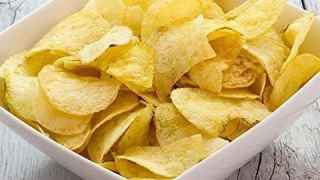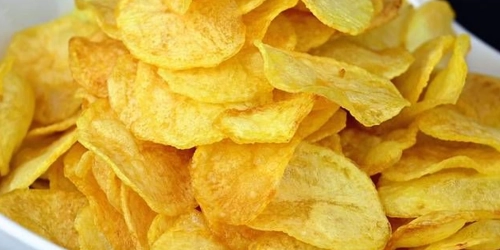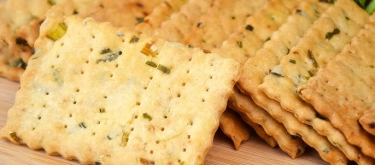Potato Chips: Taste Profile, Aroma, Benefits and Health Risks
Potato chips, thin slices of potato fried or baked until crispy, are one of the most consumed snack foods worldwide. Originating in the 19th century, they have since diversified into countless flavors and textures, shaping global snacking culture.
Potato chips are usually gluten-free but may contain gluten if processed in shared facilities. They are not suitable for individuals sensitive to high sodium intake or those requiring low-fat diets.
What does Potato Chips taste like?

Complete Sensory Description
Taste (overall):
Potato chips are defined by their crunchy, salty, and savory character. The natural starch of the potato gives a subtle underlying sweetness, while the frying or baking process adds a roasted, toasty depth.
Variations by preparation:
-
Lightly fried: Gentle saltiness with a mild, almost sweet potato note.
-
Deep fried: Stronger roasted character, more intense umami, with occasional caramelized edges.
-
Baked chips: Drier, less oily, with a more pronounced natural sweetness.
-
Flavored chips: Seasonings can completely transform the taste.
Aroma:
Fresh chips release a warm, roasted potato smell mixed with fried oil notes. Flavored varieties add additional aromas, from tangy vinegar to smoky barbecue.
Texture:
Crispy and brittle when fresh, they break sharply in the mouth and dissolve into a starchy powder coated in oil and seasoning.
Appearance:
Golden-yellow to deep brown depending on fry level. Shapes vary from thin, uniform slices to rustic, uneven cuts.
In-depth Flavor Analysis
The flavor of potato chips is a direct outcome of chemistry during cooking:
-
Starch gelatinization: Heating transforms potato starch into a crisp matrix that shatters easily.
-
Maillard reaction: At frying temperatures (around 160–180°C), reducing sugars react with amino acids to produce compounds like pyrazines and furans, responsible for the roasted, nutty, and toasty notes.
-
Fat absorption: Chips take up 30–40% oil by weight, which carries both flavor and mouthfeel. Different oils (sunflower, peanut, palm) shift the taste toward clean, nutty, or heavy tones.
-
Seasoning impact: Salt enhances umami and masks bitterness. Acids (citric, acetic) create brightness. Added powders (cheese, barbecue) rely on dehydrated dairy proteins and smoke-derived compounds to expand the flavor palette.
For chefs and producers, the key control points are oil type, frying temperature, and seasoning balance.
Varieties and Culinary Applications
-
Varieties: Classic thin, kettle-cooked (extra crunchy), ridged, baked, air-popped, flavored, and low-sodium options.
-
Applications: Typically consumed as a snack, but also used as crunchy toppings for casseroles, sandwiches, or even crushed into coatings for fried foods.
Selection and Storage
-
Selection: Choose sealed bags without excess air leaks. Check for recent production date, as older chips develop stale flavors.
-
Storage: Keep sealed in a cool, dry place. Once opened, consume quickly or reseal to maintain crispness.

Nutritional Insights
Chips are calorie-dense, high in fats and sodium. While they provide quick energy, frequent consumption may contribute to hypertension or weight gain. Some brands now offer baked or reduced-fat versions, but portion control remains essential.
Expert Insights & Culinary Tips
Chefs sometimes crush chips into breading mixes for extra crunch. Nutritionists recommend pairing chips with protein-rich foods (like yogurt dips) to balance satiety and reduce overconsumption.
Interesting and Curious Facts
-
Potato chips were invented in 1853 in Saratoga Springs, New York, by George Crum.
-
In Japan, unique flavors like seaweed and soy sauce dominate, while in the UK, “crisps” come in varieties like prawn cocktail or roast beef.
-
The global potato chips market is valued at over $30 billion annually.
Harm and Dietary Considerations
-
High sodium: Can contribute to hypertension.
-
Acrylamide risk: Formed during high-temperature frying, potentially harmful in large amounts.
-
Overconsumption: Easy to exceed healthy portion sizes due to addictive crunch and flavor.
Religious Dietary Considerations
-
Islam & Judaism: Generally permitted if fried in plant oils and without pork-derived seasonings.
-
Christianity: No restrictions.
-
Hinduism & Buddhism: Accepted, though vegetarian labeling is relevant for flavored varieties.
Final Thoughts & Sensory Journey
Potato chips embody the universal craving for crunch and salt. Their simplicity — potato, oil, and salt — is transformed through frying into a complex, addictive flavor that defines modern snacking.
Resources
-
Smith, A. F. Potato: A Global History. Reaktion Books, 2011. ISBN: 9781861898232
-
Friedman, M. “Chemistry, Biochemistry, and Safety of Acrylamide: A Review.” Journal of Agricultural and Food Chemistry. DOI: 10.1021/jf030204+
-
Weaver, C. M. Snack Foods: Processing, Quality, and Safety. CRC Press, 2001. ISBN: 9781566769474

